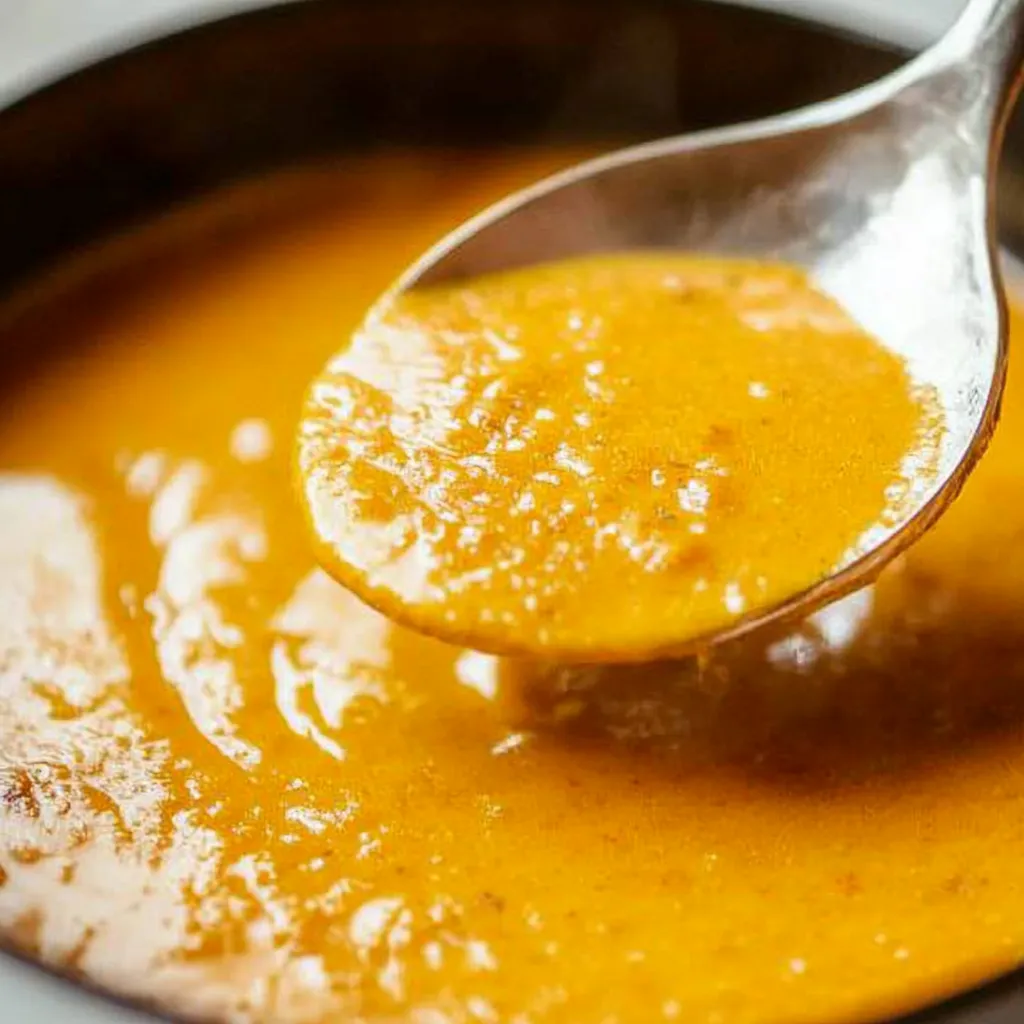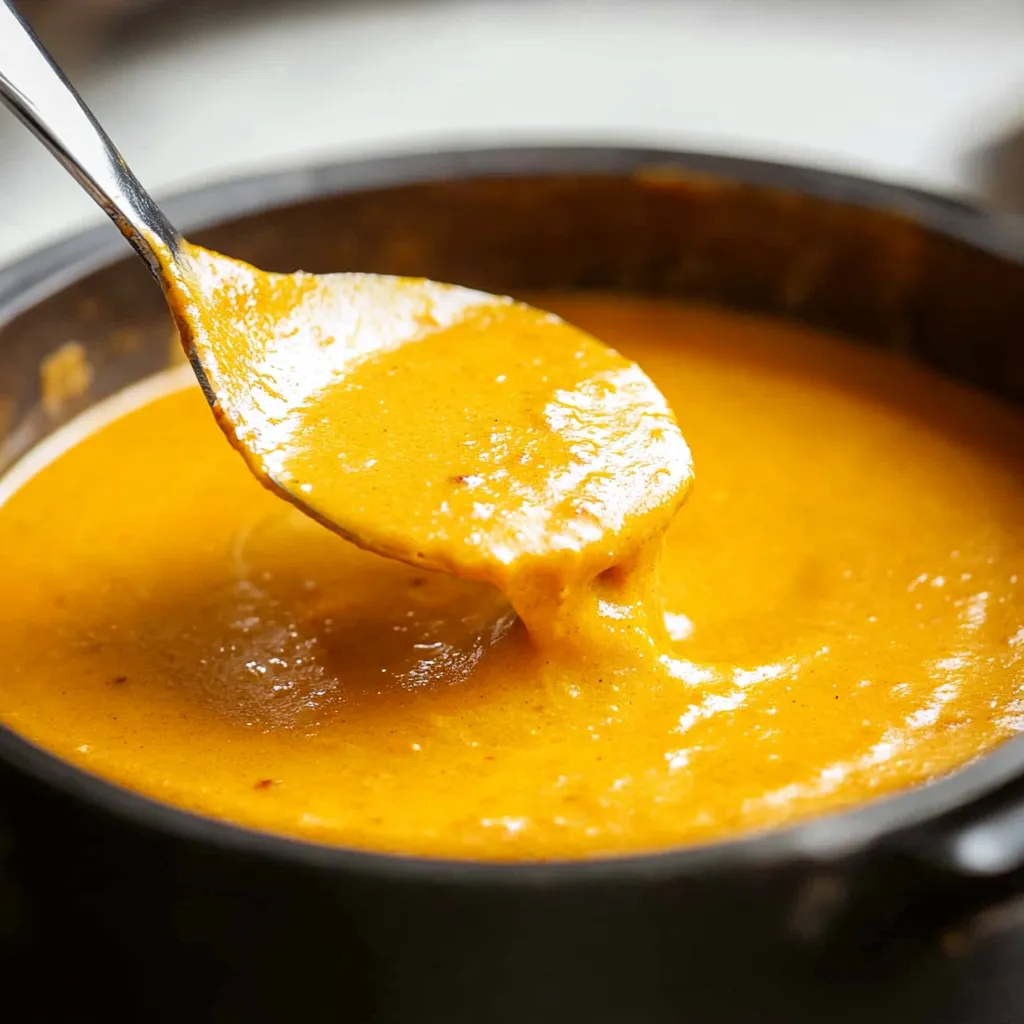 Pin it
Pin it
Transform ordinary vegetables into something extraordinary with one simple trick: oven roasting. Watch as regular veggies turn into sweet, caramelized delights right in your kitchen. The natural sugars in carrots, parsnips, sweet potatoes, and garlic all come together to create a soup so smooth and rich, you'd never guess it's completely dairy-free. The dry heat of the oven pulls out extra moisture and brings out intense flavors that boiling just can't match.
I stumbled on this method after many failed attempts to make the perfect veggie soup. The first time I tried roasting everything first, it was a game-changer - my whole family couldn't believe how creamy and flavorful it was without any added dairy. Now whenever temperatures drop, my Sunday routine always includes filling my home with the amazing smell of veggies roasting in the oven.
Selecting Prime Vegetables
- Sweet potatoes: Go for ones with bright orange insides and smooth skin. They should feel heavy, which means they're packed with moisture and natural sweetness - perfect for roasting.
- Red bell peppers: Pick ones with bright color and shiny, tight skin. The best peppers feel weighty and have fresh green stems attached.
- Parsnips: Hunt for medium ones with light-colored skin and firm texture. The smaller ones taste sweeter, while bigger ones can get tough inside.
- Carrots: Look for firm, bright orange ones that snap easily. If the greens are still attached, they should look fresh. Stay away from any with green shoulders as they'll taste bitter.
- Yellow onions: Choose ones that feel solid and have crisp outer layers. Good onions should be hard with dry, papery coverings.
- Whole garlic: Get bulbs that don't have any sprouts and feel tight and compact. Each clove needs to be full and covered completely, not dried out.
- Fresh herbs: Go for vibrant bunches that smell strong and look perky. Skip any with brown spots or wilting.
- Whole spices: Try to get whole cumin and coriander seeds to grind yourself just before cooking for the freshest taste.
Crafting Your Delicious Soup
- Getting the Roast Right
- First, focus on cutting everything into similar-sized pieces so they'll cook evenly. Sweet potatoes need smaller chunks while peppers can be bigger. Even cuts mean everything finishes at the same time.
- Flavor Foundation
- Build taste from the beginning. First coat everything with olive oil so each piece gets a thin layer that helps it brown. Then add freshly ground spices, making sure they stick to all surfaces. The oil helps release their flavors during cooking.
- Heat Control
- Warm your baking trays in the oven first. When you put veggies on hot metal, they start browning right away. Don't crowd the trays - each piece needs space around it to roast properly.
- Watching the Process
- Look for the right signs: edges turning golden, pieces shrinking slightly as water evaporates, and brown spots developing. Your kitchen will smell amazing when everything's done right.
- Starting the Soup
- Once roasted, your veggies have super concentrated flavors. Put them in your pot with good stock to combine all those deep tastes that regular boiling just can't create.
- Smart Blending
- Begin blending on low to break down bigger chunks, then speed up gradually. Move around the whole pot to catch everything. You'll see it change before your eyes, getting smoother and creamier.
- Final Touches
- Taste and add more stock if needed - you want it to pour smoothly off your spoon. Season carefully, remembering the flavors get stronger as the soup sits.
 Pin it
Pin it
My grandma always told me soup making wasn't just cooking - it was art that needed care and attention. When she first showed me how to roast veggies before making soup, it changed everything. Now I get why she was so passionate about turning simple ingredients into something amazing as I watch them transform in the hot oven.
Stunning Serving Options
This velvety soup deserves to be shown off right. Start by heating your bowls so the soup stays hot longer. Add a drizzle of good olive oil on top to make pretty patterns. For everyday meals, pair it with thick sourdough toast topped with melted sharp cheddar. When you have guests, fancy it up with homemade garlic croutons, some fresh herbs scattered on top, and a spoonful of herb-mixed yogurt or blended cashew cream.
Tasty Twists
Let what's fresh guide your soup making. In fall, try butternut squash instead of sweet potatoes - they get super sweet when roasted. Throw in some cauliflower for extra creaminess without using dairy. Add roasted mushrooms for a deeper, savory taste. Each change gives you a completely different soup while keeping that silky smooth texture.
Smart Storage
Keep your soup properly to maintain its smooth texture and rich taste. Use glass containers with snug lids and don't leave much air space. It'll stay good in the fridge for about five days - and often tastes even better the next day. When freezing, leave some room at the top since it'll expand. Split it into meal-sized portions for easy reheating. Let frozen soup thaw in your fridge overnight, then warm it slowly on the stove, stirring now and then and adding a splash of hot stock if it needs thinning.
I've learned over many batches that taking your time with the roasting stage creates something special that no amount of herbs or spices can fake. The veggies tell you when they're done through their amazing smell, golden color, and perfectly tender texture. This soup has become our family tradition, making our home cozy and bringing everyone into the kitchen to watch regular vegetables turn into bowls of pure comfort.
 Pin it
Pin it
Frequently Asked Questions
- → Why's roasting so helpful?
- It deepens flavors and caramelizes the natural sweetness, giving a rich taste that's hard to match in other methods.
- → Should I cut veggies small?
- Chop evenly into smaller pieces so they cook at the same pace. Big chunks might burn or cook unevenly.
- → Can I use other veggies?
- Sure, swap like squash for sweet potato. Too many changes though, and it'll taste totally different!
- → Does this work for meal prep?
- Absolutely! The flavors get more intense overnight, making it perfect to prep ahead.
- → Why roast garlic with skins?
- The skin keeps garlic from burning and lets it turn soft and sweet while cooking.
